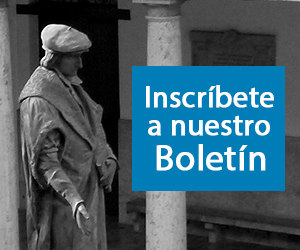Autor: Gianni Ballarani. Catedrático de Derecho Civil en la Pontificia Universidad Lateranense.
Resumen: Para una especie de heterogénesis de los fines, la ley n. 76 de 2016 sobre uniones civiles entre personas del mismo sexo y sobre la disciplina de la convivencia dividió el plan regulador de las relaciones afectivas entre adultos en dos sistemas opuestos, ambos orientados a gobernar realidades ahora asumidas homogéneas: el formalizado públicamente (que une matrimonio y uniones civiles) y la constituida en forma privada (convivencias heterosexuales afectivas estables y homosexuales contraídos o no). Pero la consagración de la suficiencia de la autonomía familiar privada nos lleva a reflexionar, por un lado, sobre la necesidad de resolver este conflicto dicotómico entre los modelos público y privado; por otro lado, sobre la superación definitiva de la lógica codicista matrimonial, al igual que sobre la hipótesis correlativa de la recodificación en materia de familia y del derecho de herencia.
Palabras clave: matrimonio; uniones civiles entre personas del mismo sexo; autonomía privada familiar; convivencia more uxorio; contrato de convivencia; contrato y matrimonio
Abstract: The essay offers a critical point of view of the recent Italian law on same-sex couples relationship and on the more uxorio relationship. For heterogenesis of the purposes, the law has divided the normative system of affective relationships in two different models, both aimed at governing affective situations now as- sumed as homogeneous: the publicly formalized one (marriage and civil unions) and the privately constituted one (same-sex and heterosexual relationship created by a contract).
But the consecration of the sufficiency of private family autonomy leads us to reflect, on the one hand, on the need to resolve this contrast between public and private family models; on the other hand, on the definitive overcoming of the original marriage law and on the correlated hypothesis of re-writing the family rules.
Key Words: marriage; civil unions between persons of the same sex; family private autonomy; coexistence more uxorio; cohabitation contract; contract and marriage
Sumario:
I. PRÓLOGO.
II. LA TESIS.
III. LA CONSECUENCIA: LA ENCRUCIJADA ENTRE LA HETERONOMÍA Y LA AUTONOMÍA.
IV. EL DATO: LA SUFICIENCIA DE LA AUTONOMÍA PRIVADA.
V. EL ANÁLISIS: EL CONTEXTO DEL DERECHO MATRIMONIAL.
VI. EL CAMBIO NORMATIVO Y CONCEPTUAL DE LOS REMEDIOS FRENTE A LA PATOLOGÍA DE LA RELACIÓN CONYUGAL.
VII. LA POSICIÓN INTERMEDIA DE LAS UNIONES CIVILES ENTRE PERSONAS DEL MISMO SEXO.
VIII. LA PERMEABILIDAD BIDIRECCIONAL ENTRE MATRIMONIO Y UNIONES CIVILES.
IX. LA CONTRACTUALIZACIÓN DE LAS RELACIONES AFECTIVAS.
X. EL PUNTO DE RUPTURA: EL CONTRATO DE CONVIVENCIA.
XII. LA AFIRMADA SUFICIENCIA DE LA AUTONOMÍA PRIVADA.
XII. LA SÍNTESIS.
XIII. LA PROPUESTA DE UN MODELO UNITARIO.
XIV. EL MÉRITO DE LA HIPÓTESIS: MÁS ALLÁ DE LAS RELACIONES DE PAREJA.
XV. EL DIFERENTE PERFIL REMEDIAL.
XVI. EPÍLOGO.
Revista indexada en SCOPUS, REDIB, ANVUR, LATINDEX, CIRC, MIAR
Referencia: Actualidad Jurídica Iberoamericana Nº 16 bis, junio 2022, ISSN: 2386-4567, pp. 862-885






